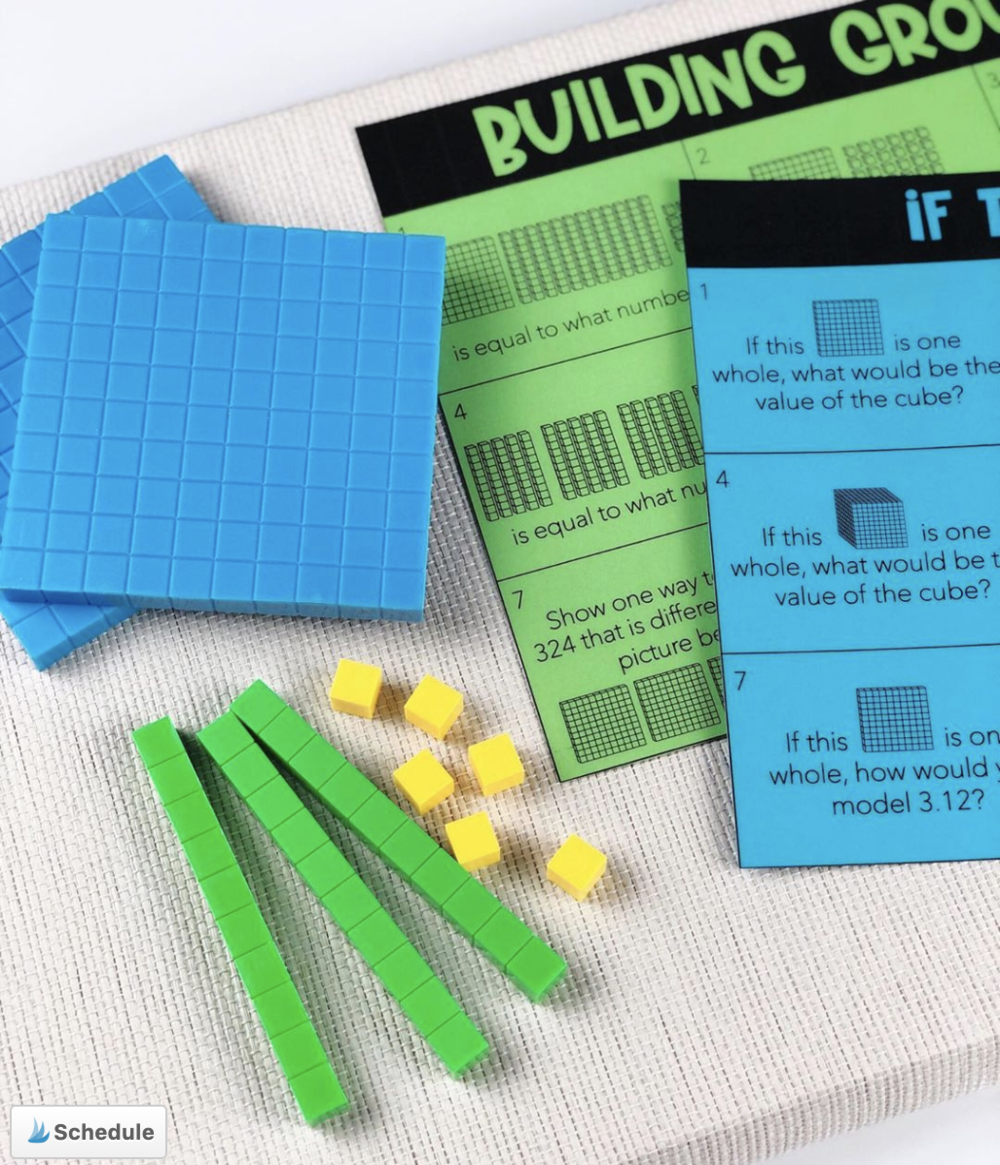Building Number Sense with Decimals
Developing students’ number sense can feel like hard work because it’s not something that comes quickly. It takes time and usually it’s a while before we see growth in our students. Building number sense with decimals is no different. We have to give students plenty of experiences seeing and working with decimals in different ways in order to see increased number sense with decimals.
Before we dive into two of my favorite ways to build students’ number sense with decimals, let’s be sure we understand the foundation students need to have in order to truly understand decimals.
Understanding Number Sense with Decimals
Did you know students’ number sense with decimals is directly dependent on their understanding of place value and fractions? It’s true! Think about this progression…
When students have strong number sense with whole numbers, they deeply understand our base-ten number system. They know that our number system is made up of groups of ten and students can fluently bundle, unbundle, and make exchanges as needed to work with and manipulate whole numbers.
Our work with decimals isn’t that much different, except that now we are working with [fractional] parts of wholes. Students have to extend their understanding of place value into working with numbers that are less than one. Students’ experience with numbers less than one up to this point have been with fractions.
They know that one-tenth is one-tenth because ten of those parts are equivalent to a whole. Now students need to learn how to take this understanding and show it using our base-ten system. Essentially, they need to be able to show these fractions as decimals using what they know about place value.
So when students struggle with knowing how many 0.01 are in 0.1, we have to go back to what they know about fractions—how many 1/100 are equivalent to 1/10?—and what they know about place value (a digit in one place has a value that is 10 times greater than that same digit in the place to its right). Students are combining what they know about place value and fractions create new understandings about decimals.
Now, let’s take a look at two ways to build students’ number sense with decimals. Be sure you don’t miss out on the FREE Decimal Number Puzzles at the end of this post!
1. Bring out the Base-Ten Blocks
If we want students to have a deep understanding of numbers, then we have to give them the opportunity to play and explore numbers with their hands. Math manipulatives are amazing tools, that if used flexibly, can reveal all sorts of new information about numbers!
My go-to math manipulatives for working with decimals are base-ten blocks. Because the purpose of base-ten blocks is to show the “relationship of ten” from place to place, each piece can represent any power of ten that we want it to be!
The flat can represent 100, but it can also represent 1. If the flat represents 1, then the rod would be one-tenth (0.1) and the cube would be one-hundredth (0.01). Using the manipulatives in this way extends their understanding of place value into work with decimals, but does so in a way that builds new learning on top of what they already know!
To learn more, check out this post on our Instagram.
2. A Twist on the Hundreds Chart
Visuals are another important part of growing students’ number sense. Although there are many visuals that are helpful in developing students’ number sense with decimals, one visual I love using with students is a hundredths chart. I enjoy using hundredths charts because they builds on the experiences students have had in lower grades with hundreds charts. Instead of a 10 by 10 grid with the numbers 1 through 100 listed in each square, the hundredths chart is filled with numbers 0.01 through 1.
When students use hundredths charts, they can see where numbers fall within the whole. They can see which numbers are closer to others, they notice patterns with the numbers that fall in the middle of the chart, and they begin to notice regularities when counting by tenths or hundredths. One benefit I’ve seen from students’ interactions with hundredths charts is their improved ability to estimate and round decimals (both of which require…you guessed it, NUMBER SENSE!).
Here are three ideas for using hundredths charts to build students’ number sense with decimals:
Finding Patterns. Give students a hundredths chart and a set of crayons. Encourage them to find patterns in the hundredths chart and use their crayons to show the patterns. Give students time to share what they see.
Race to One. In pairs, students will compete with each other to move their game piece from 0.01 to 1. Player #1 will roll a die and choose whether to let that number represent tenths or hundredths. After they’ve made a decision, they will move their piece ahead that many spaces, counting out loud and saying the numbers correctly as they do. Player #2 will take a turn and do the same thing. The first player to land right on 1 wins!
Number Puzzles. Once students have worked with hundredths charts, number puzzles are great for challenging students’ thinking! Students fill in the missing blanks on the number puzzles by counting forward and backward by tenths and hundredths. It’s fun for students and builds their number sense at the same time!
Don’t forget to grab the printable hundredths charts and the Decimal Number Puzzles FREE below!




Building number sense with decimals is no different. We have to give students plenty of experiences seeing and working with decimals in different ways in order to see increased number sense with decimals.